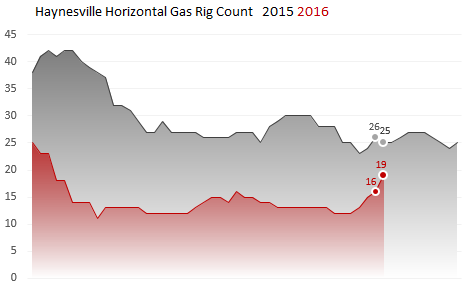The TC Nova system in Alberta handles around 80% of Western Canada natural gas production and storage, and their handy daily postings are helpfully transparent. Those who track rig counts may have noticed the high natural gas rig count in Canada, relative to production, over the past year.
Last week's Baker Hughes rig count report showed 79 gas rigs in Canada vs 114 in the US. But 2016 average daily production of marketable natural gas has been about 80 bcfd in the US vs 15 bcfd in Canada. That's a 4:1 production ratio on a 3:2 rig ratio.
Alberta production has been averaging about 0.4 bcfd over prior year recently, but it's expected to begin moving higher. Domestic demand is also rising there, with around 0.3 BCFD of incremental demand from oil sands processing expected in 2017.
AECO Hub and TC Nova storage inventories have recently received special attention, as seasonal inventory peaks and a general excess of gas in the west is impacting pricing and volatility. That should be behind us now, as daily storage draws are now the norm and should continue through winter.



